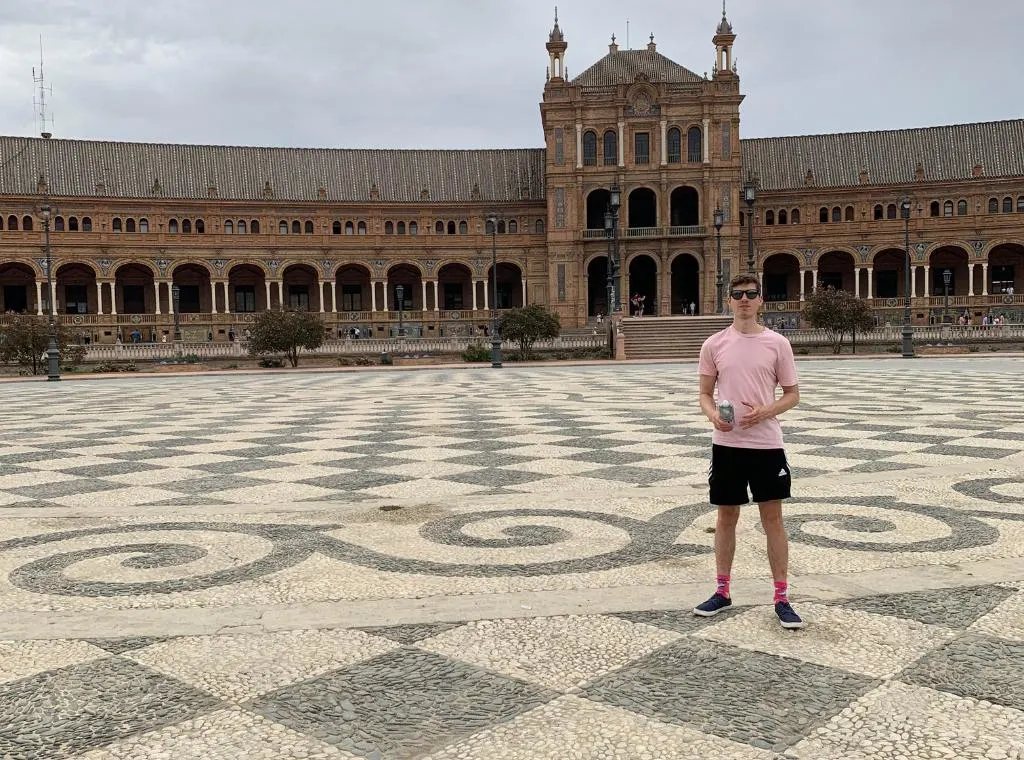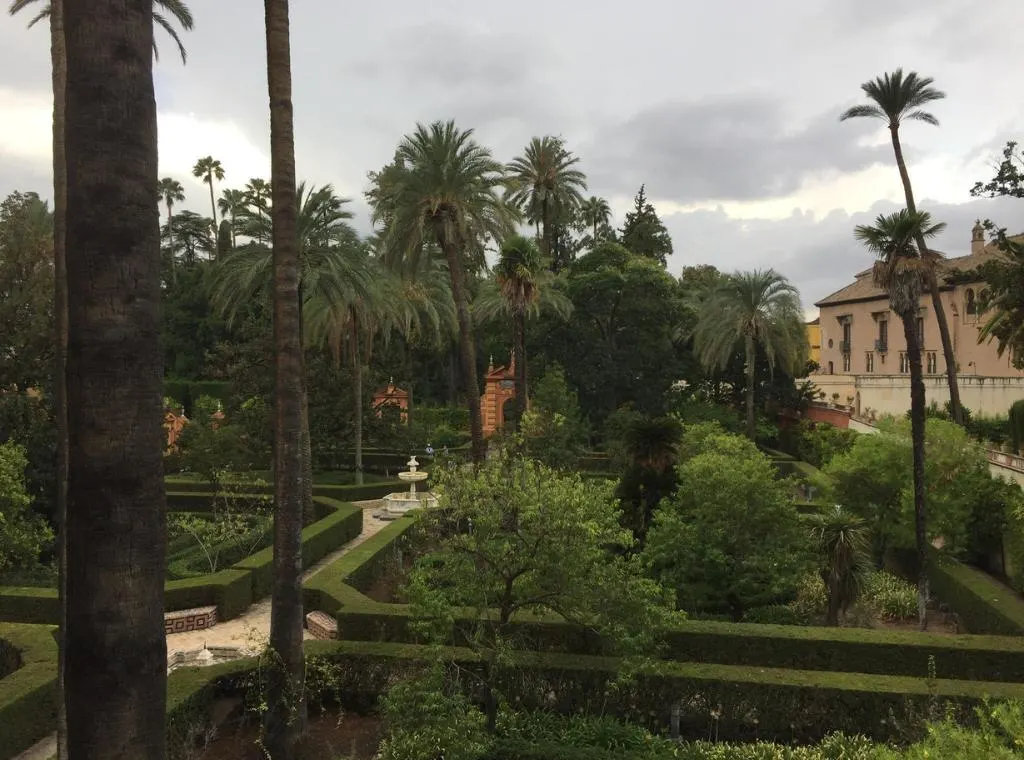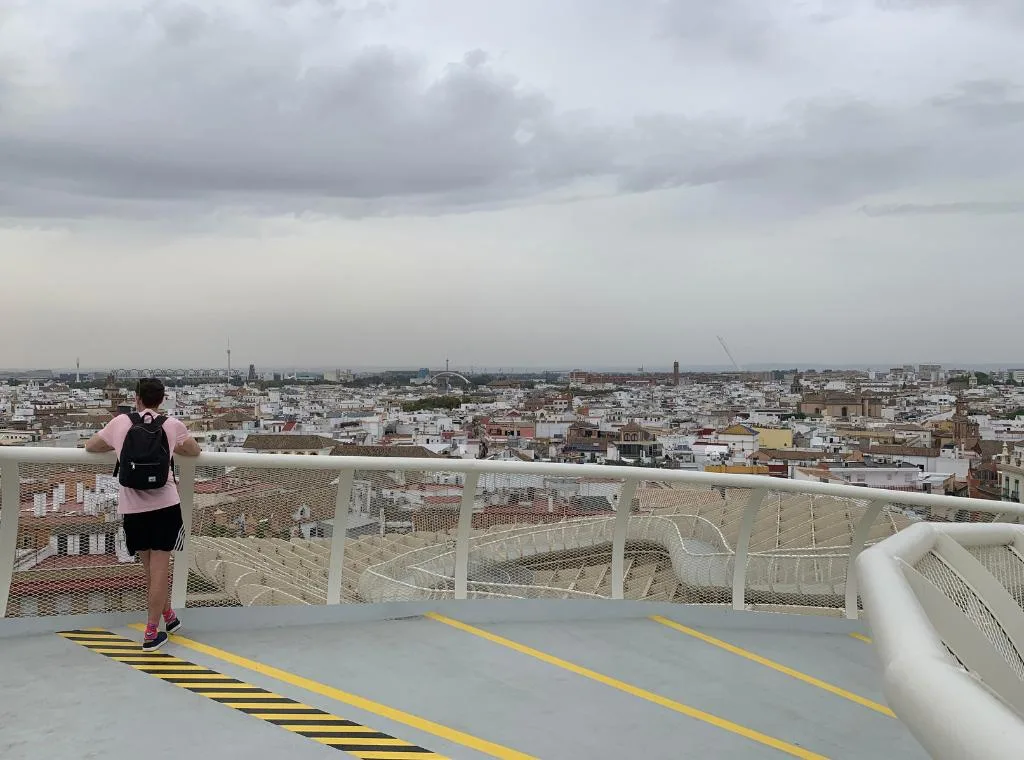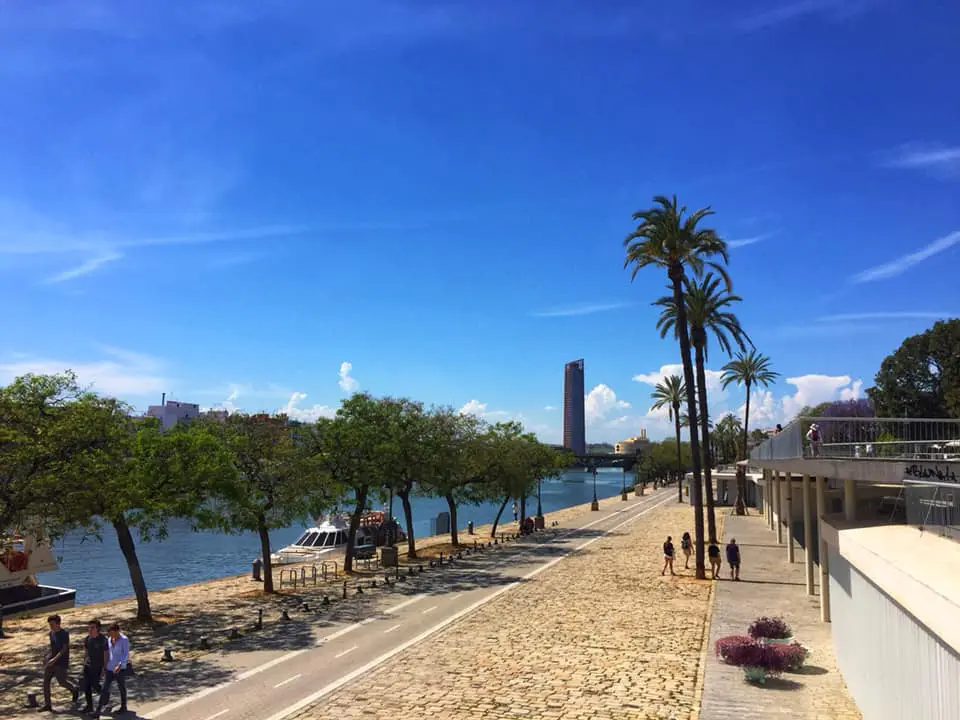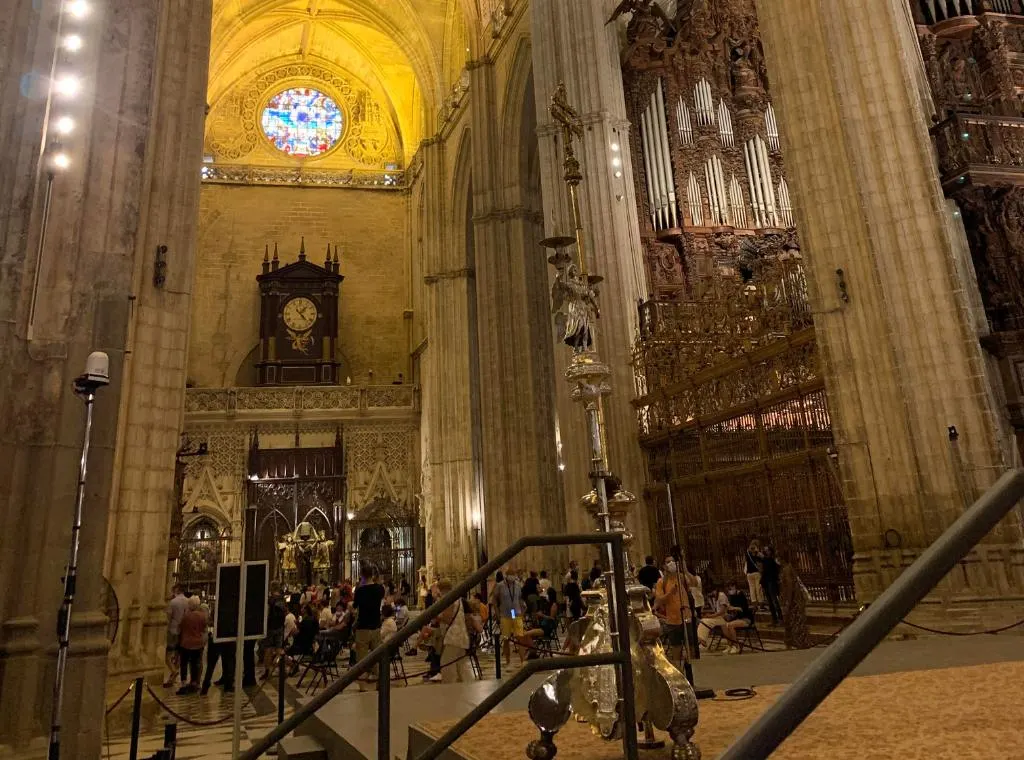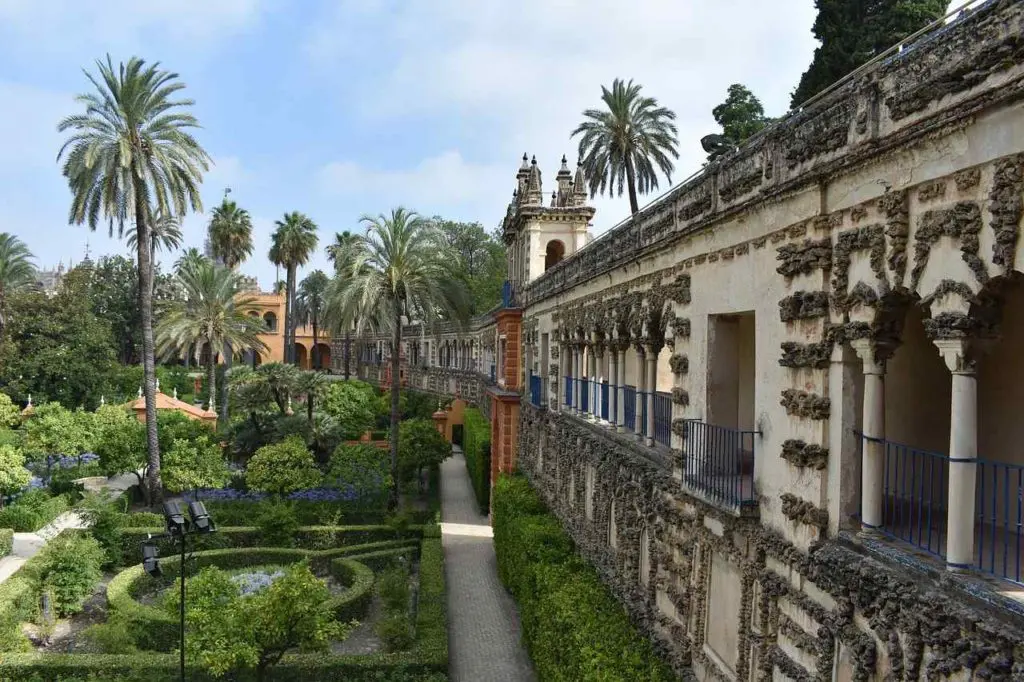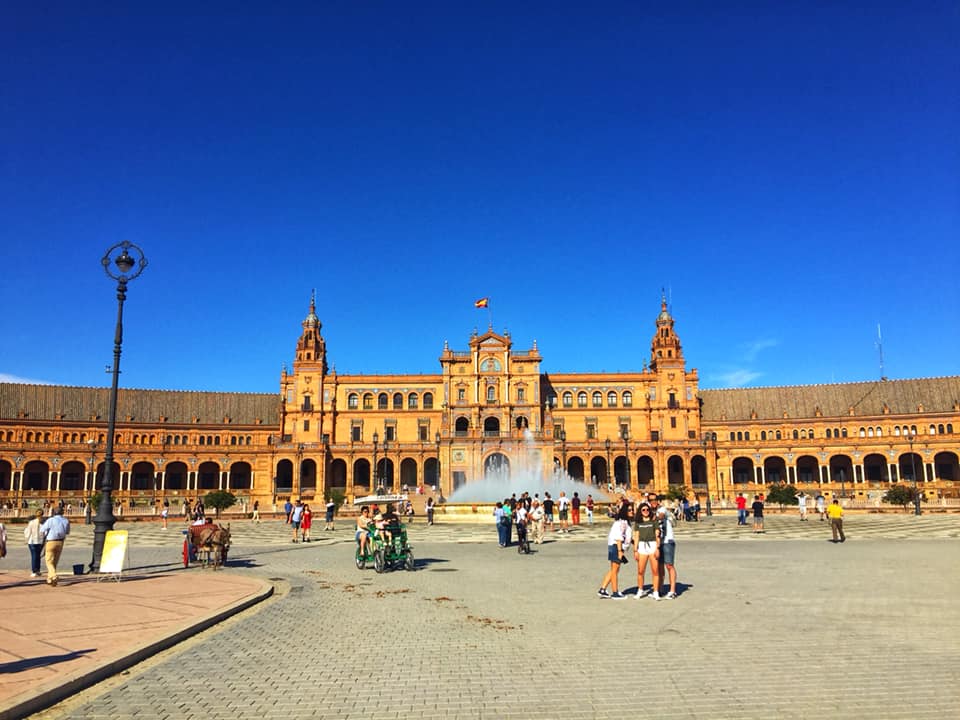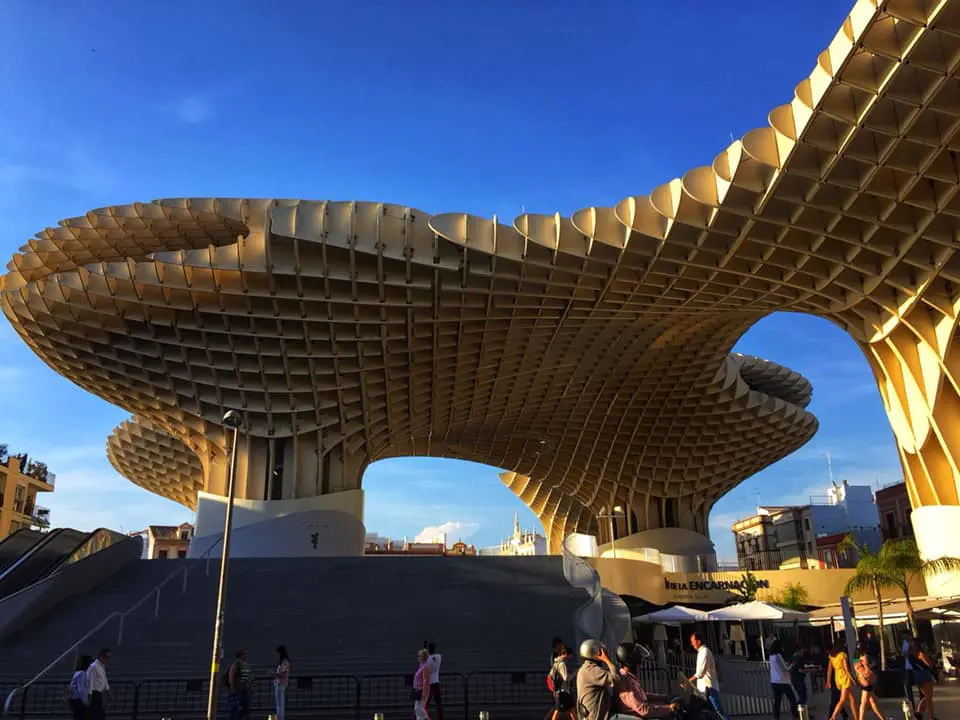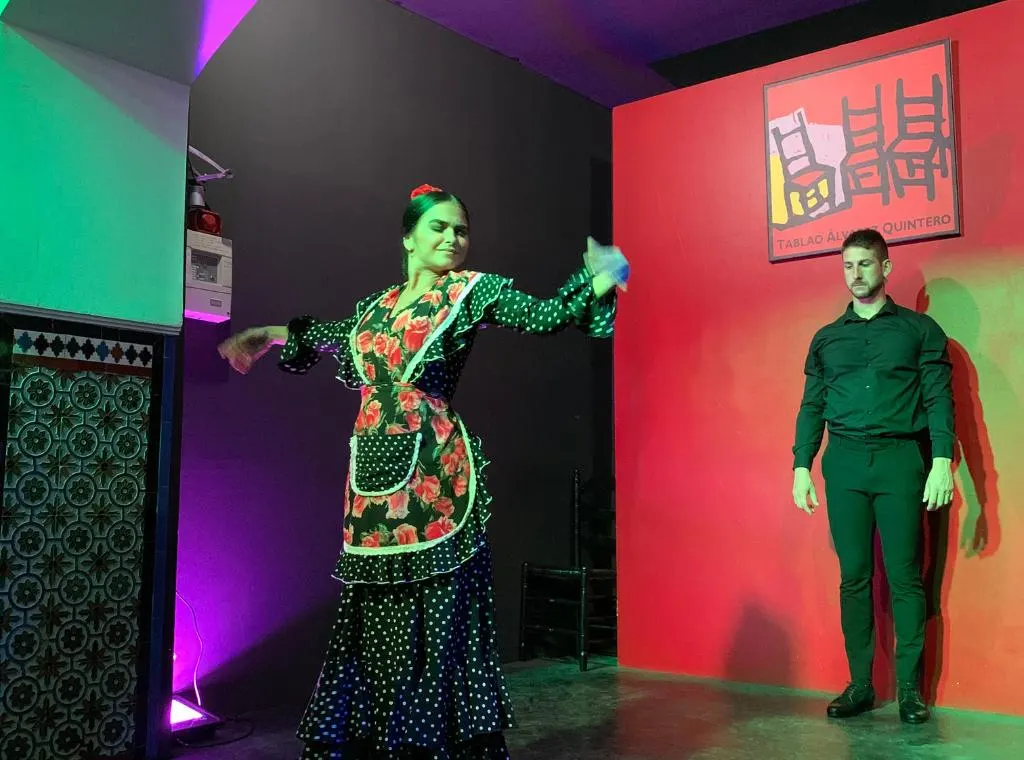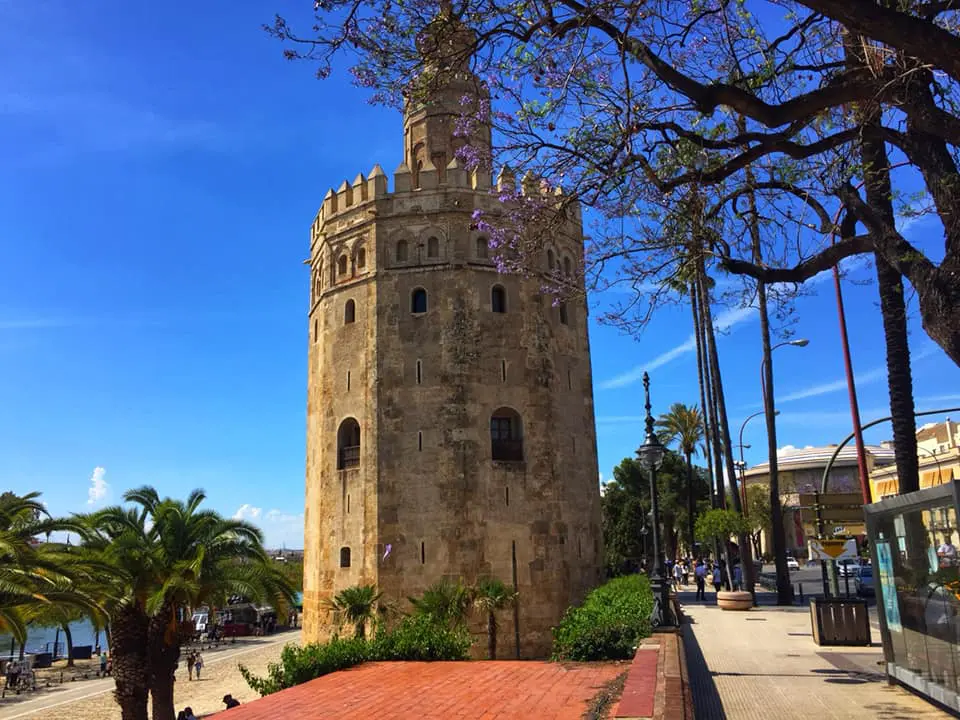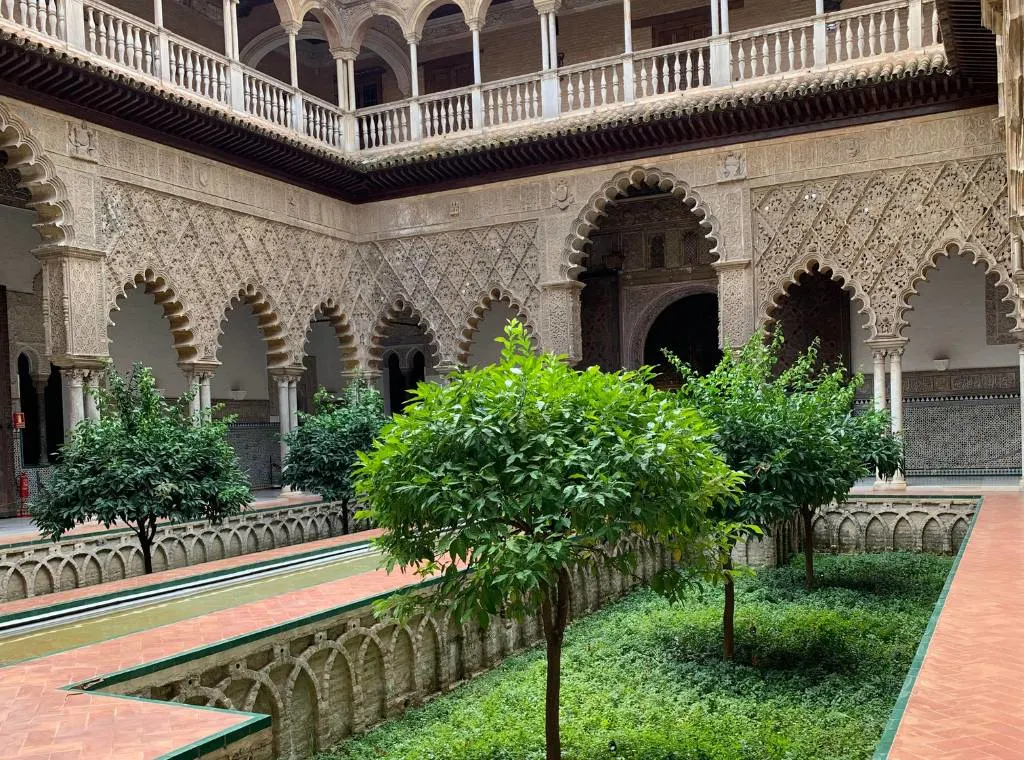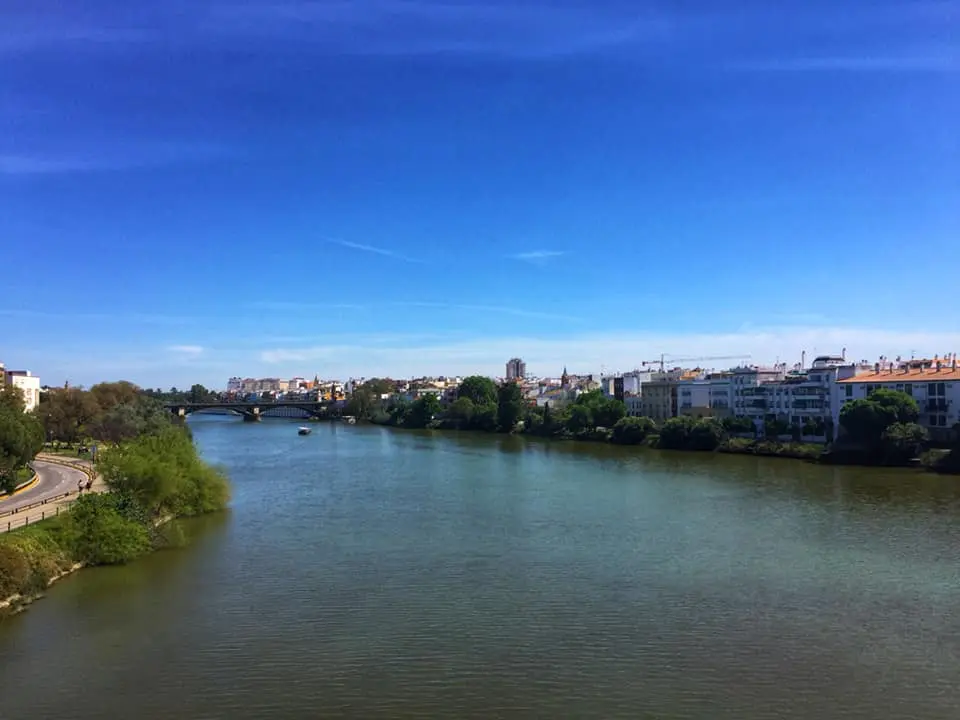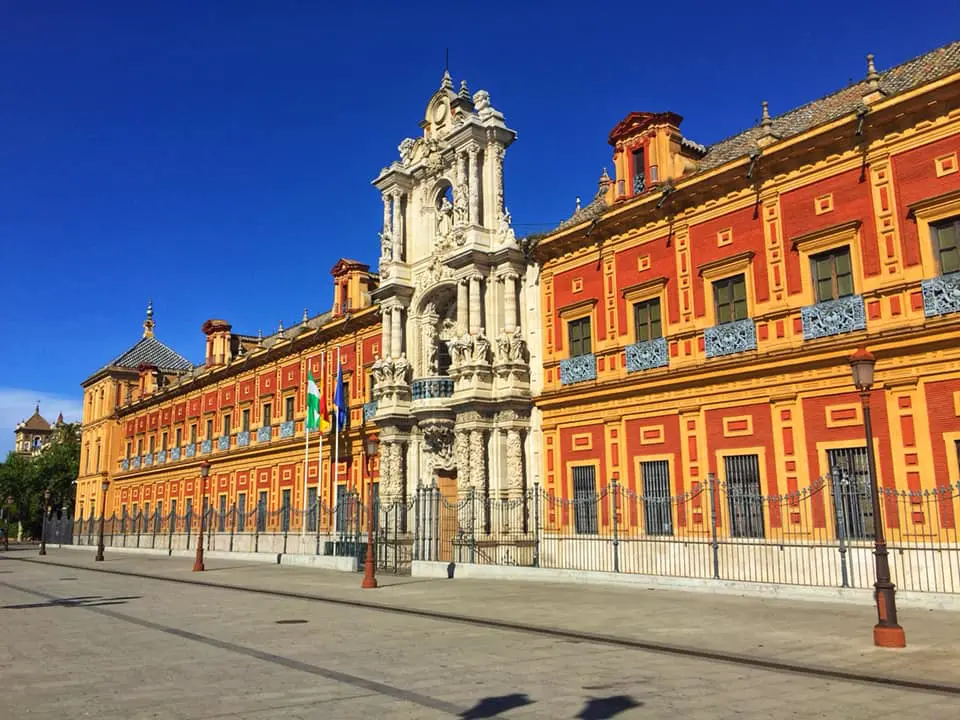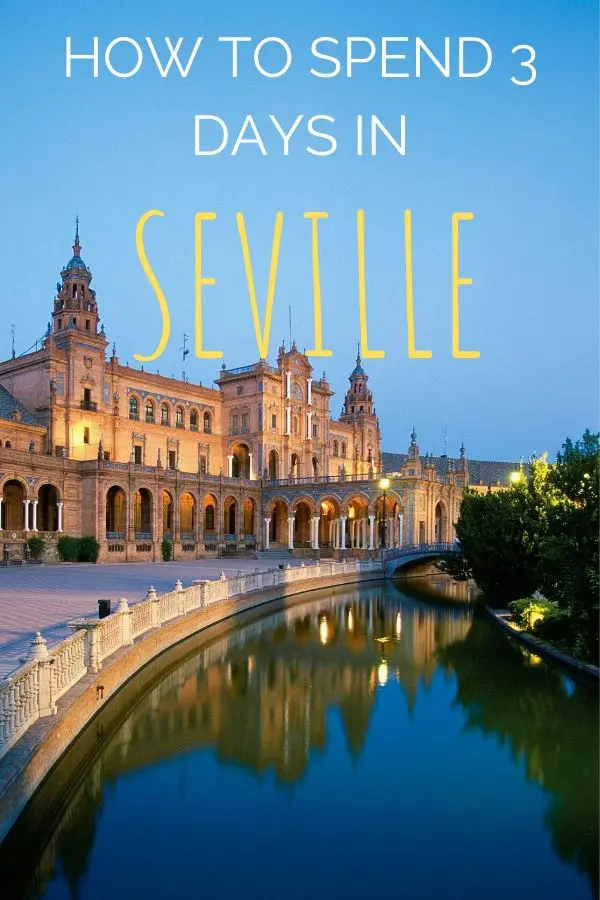3 days in Seville is a good amount of time to see this beautiful city in Andalucia. Seville is one of my favourite cities in Spain for several reasons. The sights, the people and the weather, even it can get stupidly hot during the summer!
You can visit Plaza de España, a stunning piece of architecture, walk along the river admire the views and immerse yourself in the local culture by watching flamenco and indulging in Andalucian cuisine!
This Seville itinerary will let you know the places you should visit and where to stay, during a visit to the city.
You can’t visit Spain and not go to Seville. It’s an incredible city with a lot to do and full of life. If you’re there for a few days or longer, you’ll have a great time regardless!
So without further ado, let’s get into it!
Disclosure: This article may contain affiliate/compensated links. For more information, please see our full disclosure policy.
Table of Contents
How to Spend 3 Days in Seville
My Experience in Seville
Seville is one of my favourite cities. There’s no doubt it’s one of the best places to visit in Andalucia and has to be included on any itinerary of Spain.
Before I got to visit Seville, I’d wanted to go there for ages, but I never got around to doing it. Even while I was living in Barcelona for two years, I never managed to find time for a trip to Seville.
However, eventually visited during a 6-month road trip in Europe, and I was not disappointed! Seville is one of the most beautiful cities I have ever visited.
The buildings are incredible and some of the most decorative I’ve ever seen. Plaza de España is simply amazing and is one of the most impressive buildings I’ve visited.
Then you have the beauty of La Giralda and the Alcazar of Seville. As well as this, Seville is a cultural hotbed. If you visit during Semana Santa (Easter), the city is alive with festivities.
The same is true during La Feria, which is one of the biggest festivals in Spain. For one week the city is alive with festivities revolving around flamenco and other Andalucian traditions.
I visited during the festival, not knowing it was on, and it was very lively and a lot of fun! This is probably the best word to describe Seville, fun. If you don’t visit Seville during a trip to Spain, you’re missing out!
Here are a few things I liked during my time in Seville and a few things I didn’t:
Good
- Seville is one of the most beautiful cities in Spain. The architecture is magnificent, especially Plaza de España, which is out of this world.
- The city is very lively. It feels like there’s always something going on. This was especially true during La Feria when I visited. There was a buzz throughout the city until the early hours.
Bad
- The heat. It can get very hot from April to September. I nearly got heatstroke one day from walking around too much in 40ºC heat. If you visit during these months, stay in the shade around midday as the heat will be intense.
- Seville is a big city and it can be hard to get around and see everything even with public transport. Be prepared to walk reasonable distances to get around, which in intense heat can be a problem.
What To Do in Seville in 3 Days
As the fourth-largest city in Spain, you will find a lot of things to do in Seville. If you’re wondering how many days in Seville you’ll need, my answer is a least three!
If you’re doing a road trip around Andalucia, Seville has to be included due to its beauty and based on what you can do.
Due to this, it can be difficult to know what you should see while you’re there. This is why a weekend in Seville just isn’t enough. There’s so much to see!
If you’re wondering what to do in Seville, I have listed three of the best places to see to ease some of the pressure on the decision-making front.
Plaza de España
Plaza de España is one of the most places I have seen. The architecture is incredible and blew my mind when I saw it for the first time.
The plaza was built in 1928 for the 1929 Ibero-American Exposition on the grounds of the Parque de María Luisa. If you’re a Star Wars fan, you may have seen the plaza before, as it features as part of the planet Naboo in Attack of The Clones.
I suggest you spend as much time as you can exploring the plaza because, in my opinion, it’s the best thing to see in Seville. The city is beautiful, but the plaza is the jewel in the crown.
The longer you spend here, the more you’ll be able to appreciate the architecture and its beauty. There are so many ornate details that can go unmissed if you try and visit in a rush!
Alcázar
It’s not just Plaza de España that is an impressive piece of architecture in Seville, the Alcázar is too. This royal palace, which was first occupied by the Moors and the Christians after the reconquest of the city is a must-see in Seville.
It’s a beautiful building that sees the Moor style of architecture fused with those that were prominent when the city was taken over by the Christians.
Once you’re inside the grounds you will find a host of things to do. The gardens are one place you have to visit with orange-lined trees giving it a unique feel.
If you’re a fan of Game of Thrones then you’ll want to visit. Several scenes were shot here, most of which took place in the Patio de las Doncellas and Grand Ambassadors’ Salón.
Booking a tour is the best way to see the Alcázar. You will get to see all the best spots and learn about the building’s unique history.
Las Setas de Sevilla
Las Setas de Sevilla is one of the most recent additions to Seville and one of the most architecturally impressive.
The structure acts as a gigantic parasol, which looks similar to a mushroom. Multiple levels of the structure exist and you can do different things on each one.
The underground level features ruins from the city’s past. The first level is the central market, and the second level acts as a plaza and is a great place to cool off during a hot day.
The final levels act as a viewing point as you are on top of the parasol. You have a fantastic view of the city from atop and is one of the best vantage points in the city!
Seville Itinerary – Day 1
Free Walking Tour
Whenever I visit a new city, I check into my hostel, ditch my backpack and go for a wander. I never have a plan in mind, I just walk around the city and see where I end up.
It’s a great way to see a city and get a feel for it, although it’s not for everyone. If you don’t want to wander around Seville without any idea where you’re going, then I recommend going on a free walking tour.
Most hostels offer them. You simply show up at the reception in your hostel and then you’re whisked away on an informative tour of the city free of charge.
It’s a great way to get a feel for Seville and learn about its fascinating history. If you can’t find a free walking tour, you can book one instead, which will do the same thing, but more in-depth and take you to more places!
Another option is to book a cycling tour of the city. Seville is a bicycle-friendly city, cycling is a great way to get around the city. The benefit of doing a bike tour is that you can see more of the city than you can on foot!
La Giralda
La Giralda is the bell tower of the Seville Cathedral, but in a previous life, it was built as the minaret for the Great Mosque of Seville. It’s an amazing building and has to be on your Spain bucket list when you visit the country!
Similar to almost every other building in Seville, it’s an impressive piece of architecture and one you can’t leave the city without admiring.
It’s a popular place to visit due to its beauty and this can mean lengthy views to get inside the cathedral and the bell tower.
My advice is to book a tour so you can skip the queue. Inside you will find beautiful stain-glassed windows. You can climb up the 35 ramps to the top of the tower for a magnificent view of Seville. You will also find the tomb of Christopher Columbus inside the cathedral!
Alcázar
The Alcázar of Seville is another of the many impressive buildings in Seville. It’s a royal palace that was built on the site of the Abbadid Muslim fortress which was destroyed after the Christian conquest of Seville.
The upper of the Alcázar is still used by the Royal Family when they come to Seville, but the remainder of the building is open for the public to explore.
The best way to see the Alcázar is to book a tour. You can buy a ticket and enter yourself, but you could be queuing for a while and you won’t learn as much as you would on a tour. The guides will be able to give you a detailed lesson on the fascinating history of the building.
The Alcázar is an incredible building and even if you’ve visited La Alhambra in Granada or Mezquita in Cordoba, it’s still worth visiting as there are a lot of differences and the Alcázar is impressive in its own right!
Seville Itinerary – Day 2
Plaza de España
As I mentioned above, Plaza de España is probably the best place to visit in Seville. It’s a stunning building which needs to be seen to be believed!
I spent a good hour walking around the plaza taking every in. It’s a jaw-dropping place and I had sensory overload with all there is to see.
One reason I have put this first on day two is that, unsurprisingly, it can get very crowded. I visited in the afternoon and it was packed with people. This did dampen the experience somewhat.
However, if you get up early, you should be able to avoid the crowds and get to admire Plaza de España in relative solitude!
Parque de Maria Luisa
After visiting Plaza de España, you don’t have to go far to get to Parque de Maria Luisa because the plaza is located inside it!
The plaza is the main attraction in the park and rightly so, but that doesn’t mean you should neglect to visit the rest of the park!
It’s a great place to escape the noise and craziness of the centre of Seville and relax for a few hours. There is a lot of shade in the park, so it’s a great place to hang out when the weather is hot, which is most of the year!
An interesting part of the park to visit is the Museo Arqueológico which has a lot of Roman sculptures, mosaics and statues gathered from nearby sites. A museum dedicated to local customs and traditions is nearby too.
Las Setas de Sevilla
One of the stranger things to see in Seville is Las Setas de Sevilla. They are like giant mushrooms that act as a parasol and are located in the Old Quarter of the city.
They are a new addition to Seville, as they were completed in April 2011. The design was inspired by the vaults in the Cathedral of Seville and the ficus trees in nearby Plaza de Cristo de Burgos.
There are three levels to the structure. Level 1 is at ground level, the central market. The roof of Level 1 acts as an open-air plaza. While Levels 2 and 3 take you to the two stages of the panoramic terraces which offer a fantastic view of the city.
An underground level also exists that houses the Antiquarium, where Roman and Moorish ruins are displayed.
Seville Itinerary – Day 3
Museo del Baile Flamenco
Flamenco is synonymous with Andalucia and Seville in particular. You can’t visit the city and not check out a show or visit the museum dedicated to it.
The origins of the dance are disputed, but a trip to the museum is essential if you want to learn more about its history regardless.
The museum is interactive and will walk you through the history of the dance which is fascinating. You can see the various cultures that have shaped the dance and how its popularity has increased worldwide.
Perhaps the best part of the museum is that you can see a show on the patio. These shows are popular, so it’s best to book your ticket in advance to avoid missing out!
Torre del Oro
Torre del Oro is a dodecagonal military watchtower that dates back to the Almohad caliphate in the region. It was built to control access to Seville via the Guadalquivir River.
The name means Tower of Gold in English, and it’s referred to as such because of the golden shine it projected onto the river.
The tower is an imposing structure on the banks of the river. It’s easy to see how it would strike fear into anyone who thought about ransacking Seville.
Inside the tower, you will find a naval museum, which is a good place to learn about the history of the tower and its significance. A trip to the roof terrace is worth it for the spectacular views over the river and to imagine what it must have been stationed at the tower all those years ago!
Las Dueñas Palace
As well as the Alcázar, there is another palace to visit in Seville, Las Dueñas. It was built in the late 15th century and currently belongs to the House of Alba.
Similar to the Alcázar, it’s a grand building that has many areas you can explore. The courtyard is divided into four parts which are based on traditional Islamic design.
The interior is beautiful and is home to a variety of artworks which have been curated to give the impression of what it would have been like to live there when it was lived in.
Book your ticket in advance, as the palace can get busy due to its popularity. Purchasing a ticket that comes with an audio guide is the best way to experience the palace. You’ll learn about its history and enjoy the experience more than just looking around without any context.
It’s a great way to end your 3 days in Seville!
Other Places to Visit in Seville
- River cruise – The Guadalquivir River runs through the heart of Seville, which makes it an ideal way to see the city. Viewing Seville from the river gives you a different perspective on the city. You will get to learn the history behind some of the city’s historic monuments and see where ships carrying gold from the Americas docked when they returned to Spain. Click here to book your tour!
- Bullring tour – I’m not a supporter of bullfighting at all. I find it an odd spectacle that is unnecessarily barbaric. However, I do think you should visit the bullring to get a view from the other side. A tour will teach you its history in Spain and cultural relevance and allow you to make your own mind up about whether it’s inhumane or not. Click here to book your tour!
- Italica half-day tour – The town of Italica is a short trip from Seville and worth visiting if you’re a history lover. It was the birthplace of Roman Emperors Trajan and Hadrian and is home to one of the largest amphitheatres in the world that were featured in Game of Thrones! Click here to book your tour!
- Seville tapas crawl – Seville is a lively city and the food isn’t bad too! This part of Spain has some amazing delicacies, so if you love food and want to sample the local cuisine and learn about its history, this tour is perfect! Click here to book your ticket!
If you’re still looking for more stuff to do in Seville, then take a look at this selection of activities and browse through many more!
Seville Travel Tips
This section contains practical advice to help plan your trip to Seville. You’ll find tips on where to stay, best time to visit, rough costs and much more!
Where to Stay in Seville
As one of the most popular places to visit in Spain, you have a wide range of choices when it comes to deciding where to stay.
Whether you want to stay in a hostel, or you’re looking for a room in a nice hotel, you can find what you’re looking for in Seville.
I stayed at the Black Swan Hostel, which was a lovely place to stay. It’s right in the heart of the city and it’s not that far from the main train station either. With many great hostels in Seville, Black Swan is a good place to stay if you’re unsure about which one to book!
If you don’t want to stay in a hostel, there are plenty of other options to choose from. Several fantastic hotels are available to stay in, and you can also try AirBnB if you want an apartment for yourself.
Below are a few of my recommendations about where to stay in Seville.
| Accommodation | Description | Link |
|---|---|---|
| Hostel One Centro | Great hostel to stay at if you’re by yourself and looking to meet people. | Book Now |
| La Banda Rooftop Hostel | Another good place to stay if you’re a solo traveller. This hostel has a rooftop bar and excellent facilities | Book Now |
| Black Swan Hostel | Located in the heart of Seville’s historic centre, it’s a good place for digital nomads, couples and groups. Great facilities including a big kitchen area. | Book Now |
Cost of travel in Seville
Even though you’re only spending 3 days in Seville, you need to set a budget as it’s easy to spend too much. The good thing is that Spain isn’t the most expensive country.
This is boosted by the fact that Seville is one of the cheaper cities in the country. Accommodation is reasonably priced and food and drink aren’t expensive either.
A good way to save money is to stay at a hostel and cook some Andalusian food recipes that you may have picked up after visiting a few cafes!
One thing that will eat into your budget is tours, but if you select a few that you want to do, you won’t overspend on these either.
Below is a rough guide to prices for accommodation, eating out and transport in Seville.
They don’t include prices for extras such as nights out at a bar/pub, club entry fees, souvenirs/clothing purchases, tours. etc. You will have to budget extra for these purchases as they are ‘non-essential!’

Accommodation
Hostel: Dorm – €20-35; Private – €60-80
Hotels: €50-120
Rental Apartment: €70-120

Food and Drink
Breakfast: Free-€6
Dinner: €5-15
Takeaway meal: €3-5+
Pint of beer: €2-4

Transport
City Metro / Bus: €1.35
Day card: €4.50
Bike rental: €13.33
Taxi from airport to city centre: €20-25
Best Time to Visit Seville
The best time to visit Seville is from March to May. Temperatures are warm, but not as hot as the summer, while you also get to see the numerous ad plants in the city in full bloom.
You’d think the best time to travel to Spain would be an obvious question, during the summer. Well, it’s not as clear-cut as that. The temperatures in Seville during the summer regularly top 40 degrees, which makes walking around difficult.
While September to November is cooler, you won’t get to see the city in full bloom and the occasional showers can dampen your visit.
I recommend checking out my Spain packing list before you go so you know what items to take with you. As Sevilla is one of the hottest cities in Spain, it’s worth checking out!
Seville in Spring
Spring is probably the best time to visit Seville. Temperatures aren’t as hot as in summer, although they were scorching when I visited in May. Seville also comes alive during Semana Santa (Easter) and is a fun place to be as the city parties non-stop for days.
Average temperatures from low to high: 9.2° – 27° C / 48.6° – 81° F
Seville in Summer
Seville in the summer can be unbearably hot. Temperatures of 40 degrees and above are common and it’s no fun walking around in that hot. You can’t walk around for too long, otherwise, you risk getting sunstroke. If you can brave the warm temperatures, I’d visit, otherwise, spring or autumn is a better bet.
Average temperatures from low to high: 18° – 35.5° C / 64.4° – 95.9° F
Seville in Autumn
Seville is cooler in the autumn and this offers an alternative to either Spring or Summer. While it won’t be as hot or lively as those two months, the relative calm and cooler temperatures might be appealing to many.
Average temperatures from low to high: 10° – 31.7° C / 50° – 89° F
Seville in Winter
Due to its mild temperatures, Seville is one of the best places in Europe to visit in winter. You will find fewer tourists than you would during the warmer months. If you want to avoid the heat and the crowds, a trip during winter isn’t a bad idea.
Average temperatures from low to high: 5.7° – 18° C / 42.3° – 64.6° F
How to Get Around Seville
Seville is a big city, but it’s not too difficult to get around. If you’ve been on a trip to Barcelona, then you can relax as Seville is nowhere as big. You can walk to most places without too much difficulty, which is not the case in Barca.
Due to the number of narrow alleys and streets in Seville, the best way to get around is on foot. A lot of the streets are one-way, so driving can be stressful if you don’t know where you’re going. That’s without mentioning trying to find somewhere to park.
The second best way to get around is by bike. Seville has an extensive network of cycling lanes, which make it easy to navigate the city. The SEVici bike-share scheme can be used, but you have to purchase a one-week pass and then the card to unlock the bikes has to be sent to a Spanish address.
A better option is to rent a bike from one of the numerous bike rental stores in the city. They normally charge a flat fee where you can take the bike out for the day and bring it back before the store closes.
Seville does have a metro system, but it’s relatively small with only 22 stations. However, it is a useful way to get about especially when the city is busy during Semana Santa and La Feria.
To get from Seville airport to the centre you have two options. You can either take a taxi, which will cost you between €20-31, or you can take the bus to Plaza de Armas in the centre for €4.00. The bus takes about 35 minutes and a taxi is quicker, but a lot more expensive.
Frequently Asked Questions
Is 3 days in Seville enough?
Seville has a lot of sights, but you can see all of them within three days. The city isn’t too big, so fitting everything in shouldn’t be an issue. You can easily see all of the best things in the city without rushing from place to place.
3 days in Seville offers you ample time to explore this beautiful Andalucian city. If you have more time then that’s great, but if you’re strapped for it, then you can still do a lot during a three-day trip!
How many days do you need in Seville?
Three to four days are more than to see everything Seville has to offer. You can see all the main sights in the city and travel a little beyond to see what’s on the periphery too.
Is Seville a walkable city?
Seville is easy to navigate on foot. It’s not the biggest city and you can walk the city centre from one end to the other in 45 minutes.
That said, if it’s over 30 degrees, and especially 35 degrees, it can be difficult walking around Seville. So despite not being the biggest city, the weather can make Seville less walkable.
Is Seville an expensive city?
Compared to the big cities in Spain, such as Barcelona and Madrid, Seville is less expensive. A comfortable visit in Seville costs between €50-€75 a day for the budget traveller.
Need Travel Insurance?
You can buy and claim online, even after you’ve left home. Travel insurance from WorldNomads.com is available to people from 140 countries. It’s designed for adventurous travellers with cover for overseas medical, evacuation, baggage and a range of adventure sports and activities.
Looking For More Travel Guides?
3 Days in Malaga – Check out another beautiful Andalucian country with this itinerary!
3 Days in Barcelona – See the amazing city of Barcelona with this fun 3-day itinerary!
3 Days in Valencia – Valencia isn’t the most-visited city in Spain, but this itinerary will show you why you should visit!
3 Days in Madrid – The capital is a short trip north on the high-speed train and worth visiting after you’re finished in Seville.
Northern Spain Road Trip – If you’re feeling adventurous, this road trip in the north of the country is one you should try!
Pin For Later
Tom is a travel addict who first left England to spend a year Down Under. Not satisfied with this, he then went to New Zealand, about as far away from home as he could get. He is now planning his next adventures in Europe and Canada while maintaining this blog. Check out the about me page to learn more!


